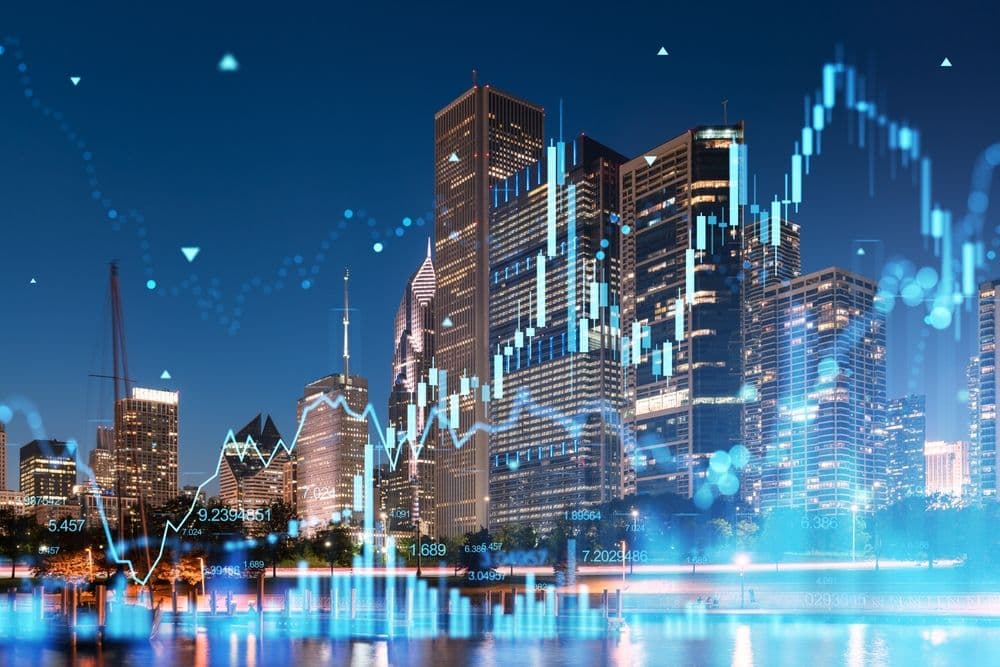 Matthieu Merchadou, CEO of Magma, discusses how digital twin technology and blockchain are reshaping the future of real estate. (Photo: Provided)
Matthieu Merchadou, CEO of Magma, discusses how digital twin technology and blockchain are reshaping the future of real estate. (Photo: Provided)As global attention turns toward real-world asset (RWA) tokenization, Magma’s approach stands out for merging data integrity with financial innovation. Rather than merely fractionalizing ownership, its Digital Twin Token framework connects verified building data directly to blockchain-based markets, allowing investors, developers, and regulators to interact with the same transparent record. This convergence of smart-city infrastructure, on-chain auditability, and sustainable finance positions Magma among the most forward-thinking players driving the next evolution of digital real estate.
Q. What inspired the creation of MAGMA Blockchain, and what core problem were you aiming to solve in the real estate or asset management space?
Magma was born from a simple but pressing reality: buildings and cities generate massive amounts of data, but this data is fragmented, unverifiable, and often siloed. That creates inefficiencies, mistrust, and high transaction costs across the real estate value chain. Our goal with Magma and the DTT® (Digital Twin Token) is to create a single, validated source of truth for each building — combining architecture, engineering, financial, and operational data — and make it usable for owners, investors, regulators, and even citizens.
Q. Can you walk us through the company’s mission and how it differentiates MAGMA from other blockchain solutions targeting real-world asset tokenization?
Most blockchain projects in real estate focus on tokenizing ownership through SPVs. We go further: Magma is a digital asset factory. Our DTT® doesn’t just fractionalize ownership; it validates and continuously updates the underlying data of the building. That live link between the asset and its digital representation creates trust, enables financing, and supports ESG compliance. This is the real differentiator: we are not just tokenizing shares, we are digitizing the building itself.
Q. What role does blockchain immutability and transparency play in building investor confidence in traditionally opaque asset classes like real estate?
Real estate has always been a black box — buyers, lenders, and regulators rarely have full visibility into what they are financing. Blockchain brings immutability and auditability. With Magma, every update, from construction permits to IoT energy data, is timestamped and validated on-chain. This reduces fraud, accelerates due diligence, and ultimately increases liquidity because investors know they’re relying on verified information.
Q. Could you elaborate on the infrastructure that powers MAGMA — for example, which blockchain network you’re built on, and why that ecosystem was chosen?
Magma is built on VeChain, the most green and sustainable blockchain, and Magma DTT® is fully EVM compatible. This allows us to deploy the DTT® on VeChain as our primary chain while retaining the flexibility to deploy on any EVM-compatible blockchain when required. VeChain was chosen for its proven track record in enterprise adoption, its low carbon footprint, and its ability to scale sustainably. This ensures that our technology aligns with the ESG values of the real estate industry while benefiting from Ethereum compatibility.
Q. The RWA sector is emerging as one of the most promising areas of Web3. How do you see tokenized assets transforming global investment flows over the next five years?
We’re at the beginning of a structural shift. Just like ETFs democratized access to equities, tokenization will democratize access to real assets. In five years, I expect real estate, infrastructure, and even carbon credits to be traded seamlessly across jurisdictions. Liquidity pools will form around tokenized RWAs, and cities or developers will directly access global capital markets through compliant blockchain rails. This is a redistribution of financial power.
Q. What are the main challenges still facing large-scale adoption of RWA tokenization — and how is MAGMA addressing them?
Regulation: Different jurisdictions have different frameworks. We address this by aligning with regulators in Dubai, the US, and Europe.
Trust in data: Tokenization without verified underlying data creates risk. That’s why our DTT® system validates and updates asset information continuously.
Adoption: Owners and institutions are cautious. We solve this by showing clear ROI: lower financing costs, reduced insurance premiums, and faster transactions.
Q. How receptive have institutional investors, developers, and governments been toward the concept of tokenized assets?
We’ve seen a remarkable shift in the last 18 months. Developers now approach us not just for tokenization, but for ESG compliance and financing retrofits. Governments in Dubai and Miami are piloting blockchain registries for real estate titles. Institutional investors are building RWA funds that allocate directly into tokenized assets. The appetite is there — what was theory two years ago is now implementation.
Q. Are you currently collaborating with any major real estate groups, financial institutions, or government entities?
Yes. On the private side, we’re working with real estate groups in Europe and the Middle East to create the first wave of DTT® buildings. We already have close to $100 million AUM with real estate funds and commercial real estate developers in Paris, with several buildings in the USA in the pipeline. On the public side, we just received our license in the DIFC Innovation Hub for Magma Blockchain’s digital twin technology, and we intend to work with the Dubai Land Department (DLD) and VARA to pilot our technology in both new construction and existing buildings.
Q. What’s your strategy for expanding MAGMA’s presence globally, especially across key markets like the Middle East, Europe, and Asia?
We use a joint-venture model: Magma provides the technology and governance, while local partners bring market access and regulatory alignment. In Dubai, this aligns with the VARA framework; in Miami, it aligns with the Florida Blockchain Bill and city digital twin projects; in Europe, we leverage ESG-driven retrofits and the CSRD framework. Asia will be next, with a focus on Singapore and Hong Kong as gateways. The strategy is simple: adapt to local regulation, partner with established players, and scale through validated success stories.
Closing Statement
At Magma, we see ourselves as the connective tissue between the physical and digital worlds of real estate. By combining ESG compliance, digital twins, and tokenized finance on the most sustainable blockchain infrastructure, we are creating not just a new way to manage assets — but a new financial layer for cities and communities. This is the future of real estate: transparent, liquid, and sustainable.

Crypto.com Teams Up With e& money in the UAE

Payments-first blockchain Tempo opens testnet

VASA bill paves way for Taiwan’s first stablecoin in 2026

Solana emerges as RWA hotspot with over 105K holders